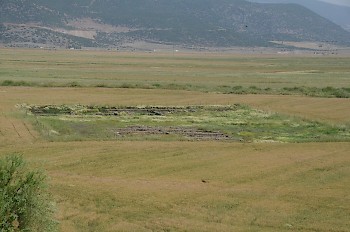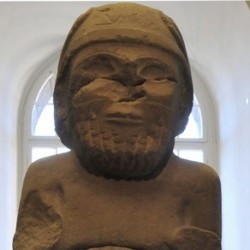Sam'al (Zincirli)
Q1039186Sam'al: one of the Iron Age kingdoms in northern Syria, modern Zincirli in Turkey.
History

At the beginning of the twelfth century BCE, the Hittite Empire disintegrated. Its capital Hattusa was abandoned and as far as we know, king Šuppililiuma II had no successor. However, two kingdoms, Tarhuntassa and Karchemish, continued the Hittite traditions. This was the end of the Bronze Age and the beginning of the Iron Age.
It used to be a poorly understood period, but our understanding is growing. We're quite certain that the "Neo-Hittite succesor states" disintegrated as well. Karchemish had to recognize the independence of Malida (later known as Melitene) and Kummaha (in the Classical period known as Commagene) in the northwestern arc of the Euphrates; Kurkuma along the Upper Pyramos; Halpa (i.e., Aleppo), and Patina (along the Lower Orontes).

At the same time, we read about a new nation in Syria: the Aramaeans. One of their states was Bit Gabbar, which had Sam'al as its capital. This city, which was already a millennium old when the Hittite Empire collapsed (cf. the statuette of the warrior below), has been identified near modern Zincirli. Bit Gabbar originally had a Neo-Hittite dynasty, but after some time, the kings started to have Aramaic names (or names in a language related to Aramaic). There is no evidence for a profound cultural change, which proves how little these labels say.
Sam'al could become an important city because it was situated at the beginning of one of the few accessible roads across the Amanus Mountains, which separate the Mediterranean from the valley of the Euphrates. Every merchant between the shores of the sea and Karchemish (and beyond: Assyria and Babylonia) would have to pass along Sam'al.
The site itself consisted of a palace, surrounded by a large wall, which in turn was surrounded by a lower city, and another wall with some hundred towers. The fortifications must have protected a very wealthy city, and the Iron Age sculpture - with Hittite, Aramaic, and Assyrian influences - confirms this impression.
In the second half of the ninth century BCE, the Assyrians brought this part of Syria under control, although Bit Gabbar would at first be ruled by its own kings. (It mayhave been an ally of Assyria, as it is not mentioned as enemy in the accounts of the battle of Qarqar in 853 BCE.) However, it was from now on clearly dominated by Assyria. The site was abandoned in the late seventh century, which must have something to do with the decline of the Assyrian Empire.







